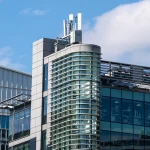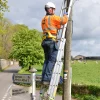Which? Report Slams Big UK Broadband ISPs for Misleading Service Speeds
Consumer magazine Which? has published a new report that attacks some of the biggest broadband ISPs, particularly BT, TalkTalk and PlusNet, for allegedly continuing to promote Internet download speeds that the majority of their customers will never be able to achieve. But are tougher advertising rules the best fix?
The report itself is actually based off Ofcom’s most recent fixed line broadband speeds study (here), which itself utilised a complex data sample collected via specially modified routers from SamKnows that were installed in around 2,000 homes across the UK. As always it’s important to be cautious where such a small sample size is used.
Advertisement
On top of that the study reflects the current Advertising Standards Authority rule, which essentially means that broadband ISPs can only promote a headline speed if it’s actually achievable by 10% of their customer base. The big ISPs also give their customers an upper and lower range estimate of “typical speed” performance during sign-up.
In that sense most ADSL2+ based packages tend to be promoted with “up to” speeds of 16-18Mbps (ADSL2 can theoretically deliver 20-24Mbps), while FTTC “fibre broadband” deals offer “up to” 38Mbps or “up to” 76Mbps for the top profile.
Meanwhile cable and pure fibre optic (FTTH/P/B) providers prefer to advertise their top speeds as they’re more likely to achieve this, although the ASA has warned that even achievable absolute speeds aren’t always allowed (here). In any case Ofcom’s data was far too limited for pure fibre optic providers to be considered in this report.
As such the bulk of moans against broadband speeds tend to fall at the feet of the older style ADSL2 connections, which account for about 59% of the current market. Slower ADSL (up to 8Mbps) also still exist for approximately 7% of the market, while the rest are newer cable and fibre based broadband solutions.
Advertisement
Sadly these ADSL / ADSL2+ lines depend upon older copper cables, which lose performance over distance (signal degradation) and can be affected by various other issues like poor home wiring or other electrical interference in the environment (faulty AC adapters, Christmas tree lights, passing trains etc.). At this point we should note that the newer FTTC services, which still use quite a bit of copper cable between street cabinets and homes, can also be affected by similar issues.
The Which? Results
According to the study, the majority (59%) of broadband connected households in the UK subscribe to packages advertising speeds between 10Mbps and 30Mbps. A third (32%) are on packages that advertise speeds of 30Mbps+ and just 9% make use of packages advertising speeds of 8Mbps or less.
However Which? found that almost no one on “up to” 8Mbps (ADSL) packages received the maximum advertised speed, while just 1% of customers on 76Mbps and 14% on 38Mbps (FTTC) received the maximum advertised speed. Finally, only 9% using 17Mbps (ADSL2+) packages received the maximum advertised speed.
Furthermore it’s noted that 31% of urban households were able to receive a maximum speed equal to the advertised ‘up to’ speed, yet only 4% of rural customers could receive the speed advertised and that’s not surprising since they’re likely to be left with only the old ADSL or ADSL2+ technologies as options.
Advertisement
By comparison Virgin Media’s more reliable cable platform put in significantly better performance and advertised maximum speeds that 98% of their customers could achieve, while 67% of their customers also received an average speed that matched the speed advertised.
Overall Which? concluded that three packages and ISPs had failed to meet the ASA’s current advertising guidelines.
Providers and Packages that Fail the ASA Rules
* BT’s ‘up to’ 76 Mbps package: Only 1% of customers received the maximum advertised speed.
* Plusnet’s ‘up to’ 76 Mbps package: Only 1% of customers received the maximum advertised speed.
* TalkTalk’s ‘up to’ 17 Mbps package: Only 4% of customers received the maximum advertised speed.
Time for a Change?
At this point it should be said that most of the big ISPs will probably disagree with Which?’s conclusions, not least due to the small sample size that means some of the specific package tests were only based on data from a few dozen customers (i.e. not much use if you have several million connections to factor).
Never the less Which? is pushing the new research in support of their “Give Us Broadband Speed Guaranteed” campaign, which has called for the ASA to update their rules so that ISPs are “only allowed to advertise speeds that most of their customers can receive“. The key word is “most“, which would indicate a figure that goes well above the current 10% threshold.
Richard Lloyd, Which? Executive Director, said:
“It’s not good enough that millions of homes are so poorly served by their broadband provider with speeds that just don’t live up to what was advertised. Broadband is an essential part of life these days so people shouldn’t be persuaded to buy a package which is never going to live up to expectations.
We’ve raised our concerns with the advertising authorities, but we now want Ofcom to ensure consumers get the speeds promised by providers.”
The calls also come hot on the heels of Ofcom’s latest 2015 update to their voluntary broadband speed code (here), which means that customers who see their broadband speeds falling below the Minimum Guaranteed Access Line Speed (i.e. the speeds achieved by the slowest 10% of an ISPs customers) will be able to leave their contracts at any time without penalty.
Not that switching ISP, especially if you live in a very remote rural area, will solve the underlying problem because most providers (i.e. predominantly those on ADSL, ADSL2+ and FTTC) are bound by the limits of BTOpenreach’s underlying telecoms infrastructure.
It’s also important to remember that consumer broadband performance is based off shared capacity, which is partly why it’s so cheap, and so there will always be some fluctuation even on good connections (especially at peak times when lots of people go online).
As ever if subscribers really want a guarantee of speed then there’s always the option of a proper uncontended business leased line style solution with a real Service Level Agreement (SLA), but of course you’ll pay through the nose for that. Similarly if you applied the same solution to home broadband then the prices would have to rise dramatically.
UPDATE 9:45am
A quick comment from urban fibre optic ISP Hyperoptic.
Steve Holford, VP Product Marketing at Hyperoptic, said:
“Unfortunately the news from Which? that over 15 million Brits aren’t getting their advertised broadband speeds doesn’t come as a surprise. The discrepancy between advertised and actual broadband speeds is due to the fundamental flaw in the technology that is used to deliver the majority of broadband connections.
Consumers are being misled into believing that they are receiving ‘fibre’ broadband, when really the fibre stops somewhere in the streets around their home – the broadband is delivered into their house via outdated copper lines, which accounts for the quality and distance degradation in speeds and peak-time slowdowns. Only true fibre to the home enables residents to connect to the internet at advertised speeds.”
Mark is a professional technology writer, IT consultant and computer engineer from Dorset (England), he also founded ISPreview in 1999 and enjoys analysing the latest telecoms and broadband developments. Find me on X (Twitter), Mastodon, Facebook, BlueSky, Threads.net and Linkedin.
« New Map of London UK Shows Slow Broadband is Like a Digital Cancer

















































Comments are closed